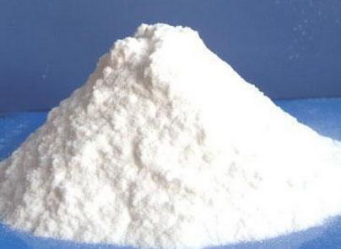Propiconazole is a commonly used pesticide fungicide, but do you really understand its properties? Do you know how to use it properly? The following is a detailed analysis of the pesticide network .
I don't know all about my characteristics.
I am a triazole fungicide, not a new drug, it has been around for decades. Only in recent years have everyone approached me and met me. I have the functions of protection, treatment and eradication, fast onset and wide spectrum of sterilization. It has outstanding control effects on powdery mildew, rust and leaf spot. It has a certain effect on higher fungi other than lower fungal downy mildew and disease. It is special in the distribution and transmission of crops. The outstanding performance is the obvious and unique gas phase distribution of the internal absorption, which plays an important role in protecting the new leaves of plants and improving the disease prevention effect. It is widely used in fruit leaf spot disease, wheat powdery mildew and rust, corn size spot disease, etc., and the concentration is generally 1000~2000 times spray. In 2015, some areas of wheat powdery mildew broke out. In some places, I used 50 ml per mu. Not only did I get sick, but I also kept green and prevented aging and increased grain weight. If it is used on summer corn, after using 5 leaves of corn, 12~20 ml per acre can prevent sheath blight and size spot disease, and it can be controlled to promote and increase green and strong stalks.
Good mixability, complementary partner
My mix is ​​very good, and there are many partners with complementary strengths. This has been discovered and used by more and more people. It is usually compounded with triazole. Can be used independently, 30% A · C can also be used. It has outstanding control effects on wheat sheath blight, powdery mildew, rust, rice sheath blight, rice smut, corn rust, stevia spot blight, vegetable leaf spot, including green pepper brown spot disease.
A lot of people know about my shortcomings, that is, the role of chemical control is strong, but the duration of validity is short, generally not more than 10 days. From the perspective of fairness and justice, I also have a good effect on the regulation and adjustment of the crop itself. There is a township farmer technician who knows me clearly. He not only used my expertise in disease prevention, but also promoted me as an excellent regulator. He spent more than two years experimenting with the optimal control and dose of propiconazole in different crops and different growth stages, and has been widely promoted for 6 years. Widely used in wheat, rice, corn, soybean, stevia, green pepper and other crops other than watermelon. In particular, it has a unique effect on the green pepper and the fruit setting, which increases the luster of the vegetables. For example, the green pepper leaves are not easy to sit on the fruit and the fruit is not shiny and yellow, only 10~30 ml per mu (small seedlings, low temperature, low seedlings, high temperature, high temperature limit) can solve the problem in 2 days. This year, a lot of local corn rust can't be beaten, why, late, the amount of water used is less, the medicine is very important, its practical I (propiconazole) plus flusilazole effect is very good.
Scientific use to avoid trouble, pay attention to these points
I am also good at preventing crops, adjusting the control, and the application effect is beyond doubt. Be sure to pay attention to it, or else blame me. In fact, it is good to grasp the main aspects. Crops should not be used in the seedling stage and low temperature stage, and the crops can be used in the long growing period and the vigorous growth period. Different crops, different periods, and different cultivation methods use different doses. For example, it is used in greenhouse green pepper, the dosage per mu, 12~20 ml of spring pepper and 30~60 ml of autumn pepper. The wheat tillering period is 20 ml, and 50 to 60 ml after the heading. Even if the dose is too large, don't be afraid. It won't affect the fruit setting. Don't worry if you don't have a long problem. A few days will pass. At the same time, I must pay attention to the fact that I am not resistant to high temperature, fight drugs and pay attention to my custody. Everyone in the actual production and application should be flexible according to different regions, different crops, different cultivation methods and different growth stages! I am confident that I will make greater contributions to the harvest of the earth.
For more information on propiconazole, please pay attention to the pesticide information network ()
Carboxymethyl Cellulose is a carboxymethyl group substituted by cellulose. According to its molecular weight or substitution, it can be completely dissolved or insoluble polymeric, which can be used as a weak acid type cation exchanger to separate neutral or alkaline proteins. Can form high viscosity carboxymethyl cellulose of colloid, solution, adhesion, thickening, flow, emulsifying dispersion, informs, water retention, protective colloid, film forming, acid, salt, clouding resistance and other properties, and physical harm, so in food, medicine, daily chemical, oil, paper making, textile, construction and other fields is widely used in production.
Carboxymethyl cellulose for non-toxic tasteless white flocculent powder, stable performance, easy to dissolve in water, its aqueous solution is neutral or alkaline transparent viscous liquid, soluble in water soluble glue and other resin, insoluble in ethanol and other organic solvents. CMC can be used as binder, thickener, suspension, emulsifier, dispersant, stabilizer, sizing agent, etc.

Carboxymethyl Cellulose
Carboxymethyl Cellulose Cmc,Carboxymethyl Cellulose,High Viscosity Cmc,Ceramic Grade Carboxymethyl Cellulose
Hebei pancan trading co. LTD , https://www.hbpancanshangmao.com